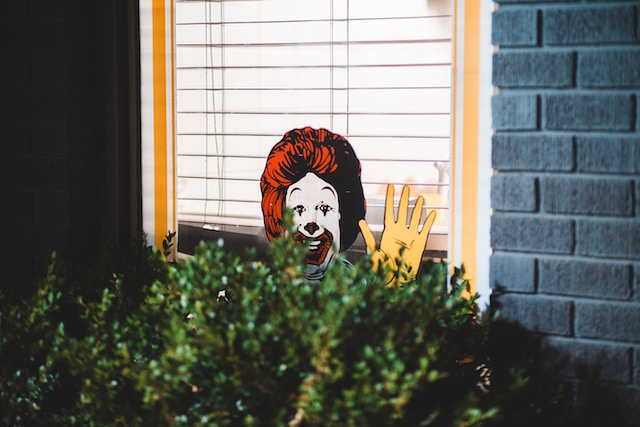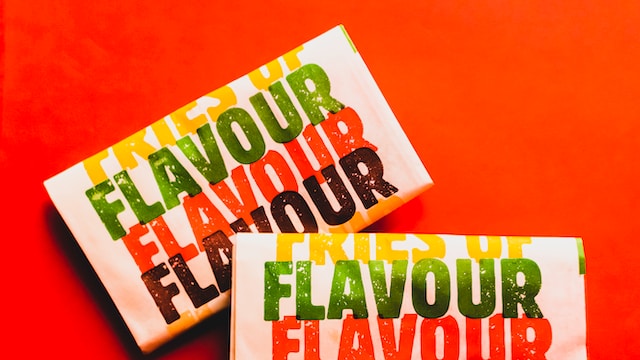Ronald McDonald, the Hamburger-Happy Clown, first hit American TV screens in 1963, and if you’ve not seen the original version of the fast-food chain’s world-famous mascot, brace yourself: it’s unsettling. With a cup nose, thick eyebrows, and a McDonald’s tray for a hat, the mascot’s TV debut has been dubbed “hideous,” “scary,” and “terrifying” over the years. And yet, after the Hamburger-Happy Clown’s first commercial, Ronald McDonald remained a loyal mascot (albeit with different hair and makeup, thankfully) for decades, only retiring in 2016.
And Ronald wasn’t alone—he was just one member of a big fast-food gang. Think Colonel Sanders, The Burger King, Jack Box, The Wendy Girl, and those bizarre Spoongmonkeys from Quiznos (which have recently made a comeback). For years, mascots have helped to sell fast food, and they’ve been doing it very successfully. But is it time to retire them for good? After all, while their image may be fun and jovial (for the most part), the realities of the industry they’re promoting are far from positive.
 Unsplash
Unsplash
How long have fast-food mascots been around?
Fast-food mascots started to become a thing in the 1960s and 1970s, which makes sense because, before that, the fast-food industry hadn’t really started to take off yet. McDonald’s first launched in the late 1940s, while chains like Burger King and Taco Bell didn’t open their doors until the 1950s.
That commercial in 1963 was the first appearance for Ronald McDonald, and an animated version of The Burger King first emerged on TV in the 1970s (but he had appeared on the chain’s signage before that). In 1995, Jack in the Box decided to take the iconic head-on springs that sit on the roof of its restaurants and turn them into a character—with a white golf ball-like head and a human body—for its commercials.
But basically, as long as fast food has been around, mascots have been around. And while they are supposed to be endearing to everyone, a lot of the time, they’re designed to appeal to children. But that said, research suggests that our love for them can stay with us right through to adulthood. In 2014, one study found that the mascots we love can impact our judgment of the same food they endorsed for years afterward.
“Advertising to children might pay off for decades if you connect with them, and if they develop a strong emotional feeling for your characters,” Merrie Brucks, professor of marketing at the University of Arizona, said to the National Post. “What children learn when they’re really, really young stays with them—almost unquestioningly.”
Research suggests that food mascots also, unsurprisingly, help to increase profits. In 2021, a study by the Moving Picture Company, for example, suggested that advertising with characters and mascots on a long-term basis could increase brand profits by more than 34 percent, compared with just over 26 percent for brands that don’t use a mascot. The research also suggested that the new customer gain of brands with mascots could increase by more than 40 percent, compared with 32 percent for no-mascot brands.
 Unsplash
Unsplash
Why fast-food mascots are so damaging
The fact that fast-food mascots are designed to appeal to children has raised ethical questions for many. After all, the foods they are promoting were not formulated for their nutritional value.
A McDonald’s Big Mac, for example, contains 11 grams of saturated fat. And while a little every now and again is unlikely to harm you, eating too much can increase the risk of chronic diseases, like heart disease and stroke. Most fast-food meals are also made with processed meat, which has been categorized as a Group One carcinogen by the World Health Organization.
Some chains are starting to embrace plant-based options, like Burger King’s Impossible Whopper, for example, and McDonald’s McPlant in the UK, but meat is still in the majority of menu items. This isn’t just potentially harmful to our health, but also to the planet. The quirky, creative, cheerful image of a fast-food promoting mascot is jarring in comparison to the impact all of these burgers and nuggets have on the environment.
The fast-food industry is one of Big Meat’s most profitable customers, and every year, animal agriculture emits at least 14.5 percent of global greenhouse gasses into the atmosphere. It’s also a major contributor to water pollution, air pollution, and ocean dead zones. And beef—the key ingredient in Whoppers and Big Macs—is also the biggest driver of deforestation in the world.
“Beef production is the top driver of deforestation in the world’s tropical forests,” the World Wildlife Fund notes. “The forest conversion it generates more than doubles that generated by the production of soy, palm oil, and wood products (the second, third, and fourth biggest drivers) combined. Beef also drives the conversion of non-forest landscapes, from grasslands to savannas.”
And there is, of course, also the animal welfare element to consider. Every year, millions of animals are raised in industrialized, cramped factory farm conditions, and many of them will end up in fast-food meals. KFC, McDonald’s, Chick-fil-A, Subway, and Burger King have all been accused of poor, and in some cases, abusive, treatment of chickens, in particular.
So, while mascots help us to connect with brands, by playing on our emotions, our sense of fun, and, ultimately, our appetites, it’s also important to consider the motives of the industry they’re asking us to invest in. Research indicates that for Ronald McDonald, the Colonel, or even those weird little Spoongmonkeys, this isn’t about our health, the environment, or animals, but profit above all.
For more on fast food, read:
JUMP TO ... Latest News | Recipes | Guides | Health | Subscribe









